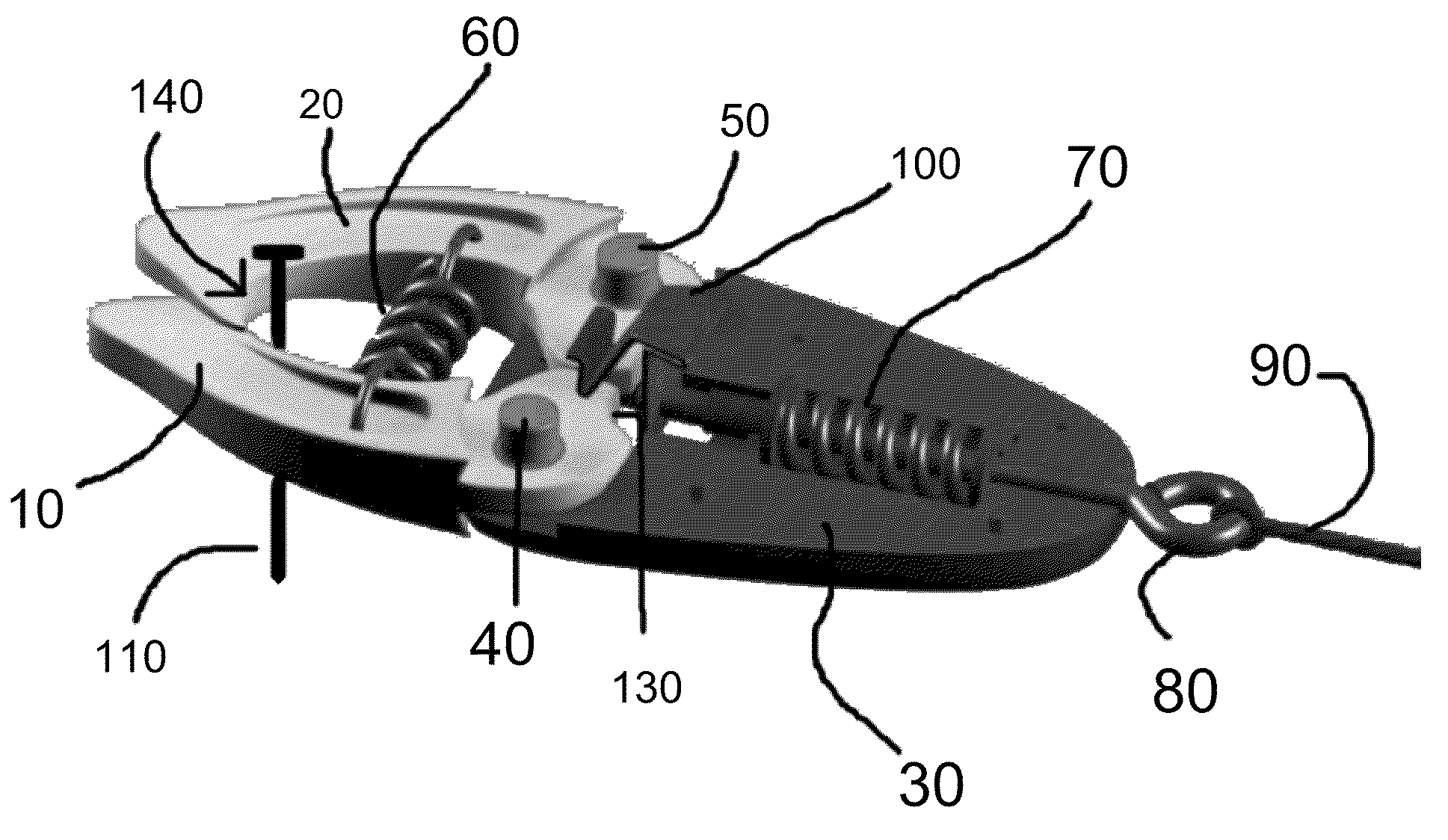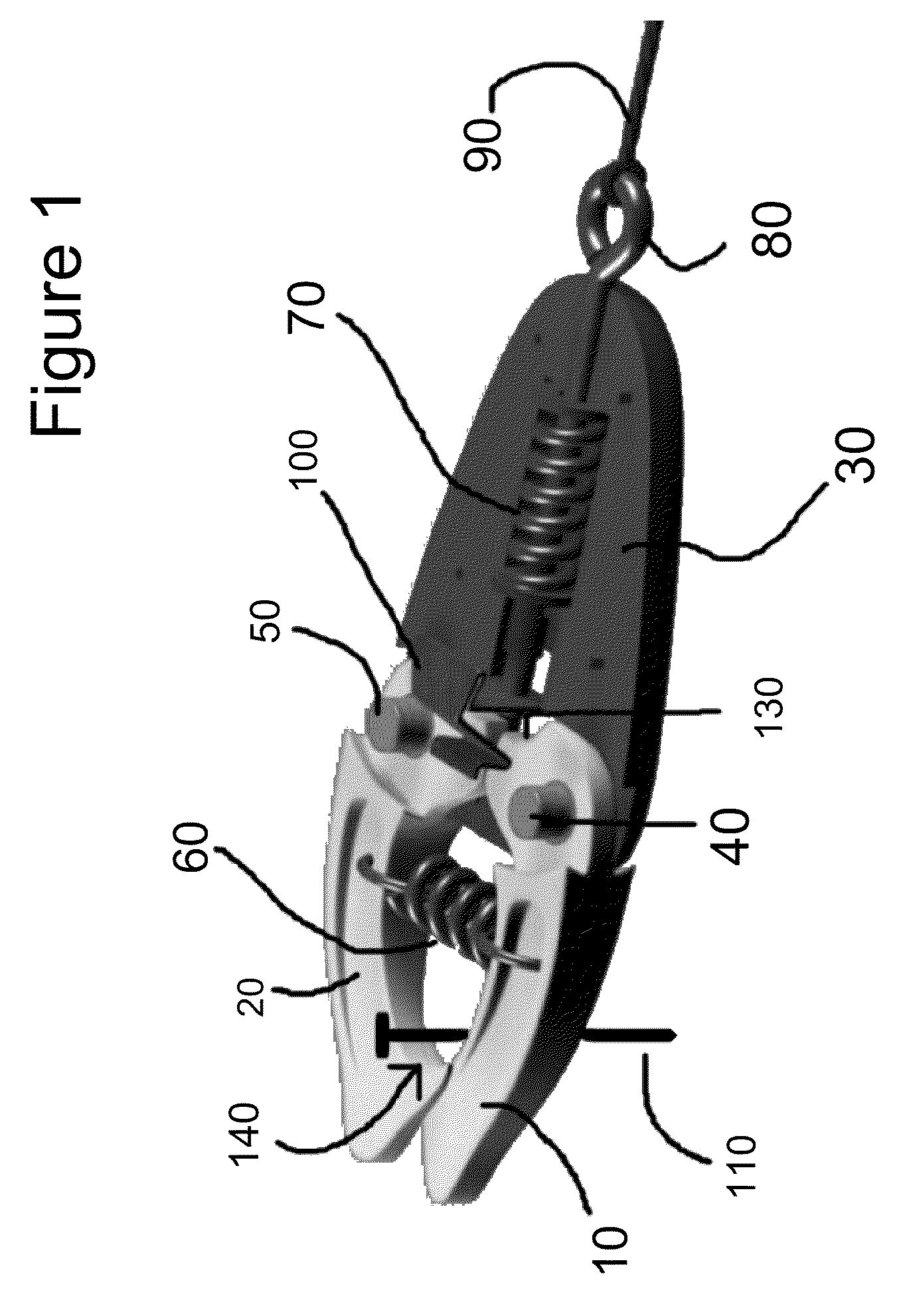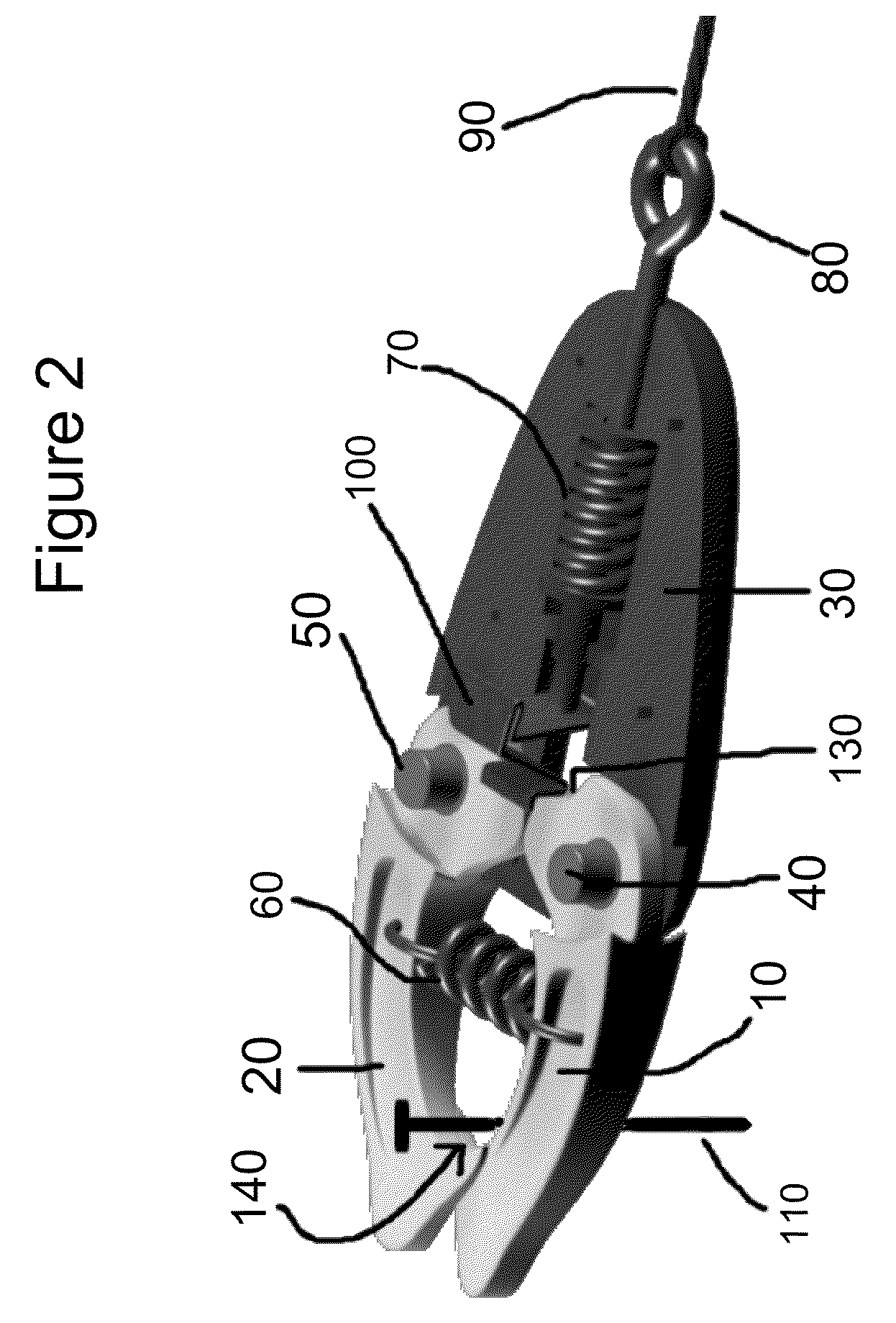Chalk line marking system
a line marking and line marking technology, applied in surveying, navigation, instruments, etc., can solve the problems of limiting the usefulness of construction techniques, unable to deny the practical impact of construction techniques on our lives, and unable to prove the practicality of construction techniques
- Summary
- Abstract
- Description
- Claims
- Application Information
AI Technical Summary
Benefits of technology
Problems solved by technology
Method used
Image
Examples
Embodiment Construction
[0013]The present invention will be better understood and objects other than those set forth above will become more apparent when consideration is given to the following detailed description thereof. Such description makes reference to the annexed drawings wherein:
[0014]In FIG. 1, we see an environmental view of the present invention. As shown from this view, a curved first hook (10) is connected to the main body (30) by a first post (40). Moreover, a curved second hook (20) is also connected to the main body (30) by a second post (50). The first hook (10) and second hook (20) overlap at the tip making a closed hoop (140). This gives the user the opportunity to place the first and second hooks (10, 20) around a nail (110). The first and second posts (40, 50) allow the first and second hooks (10, 20) to rotate back and forth. Conventionally, a user would use a conventional chalk lining device to snap a line on a work surface. With the present invention, the user also uses a conventio...
PUM
 Login to View More
Login to View More Abstract
Description
Claims
Application Information
 Login to View More
Login to View More - R&D
- Intellectual Property
- Life Sciences
- Materials
- Tech Scout
- Unparalleled Data Quality
- Higher Quality Content
- 60% Fewer Hallucinations
Browse by: Latest US Patents, China's latest patents, Technical Efficacy Thesaurus, Application Domain, Technology Topic, Popular Technical Reports.
© 2025 PatSnap. All rights reserved.Legal|Privacy policy|Modern Slavery Act Transparency Statement|Sitemap|About US| Contact US: help@patsnap.com



